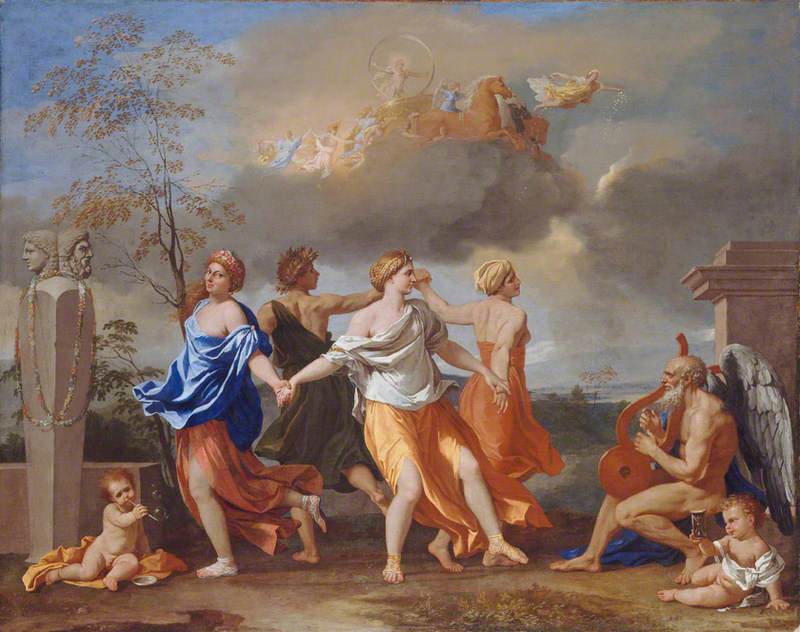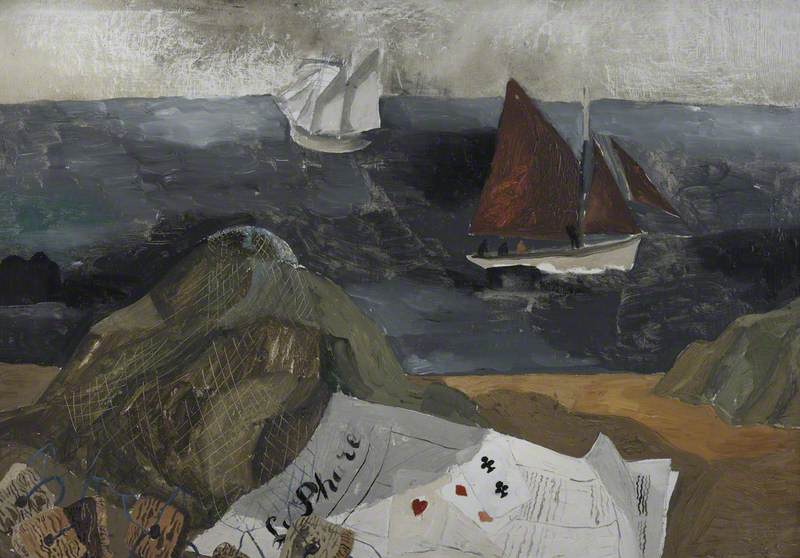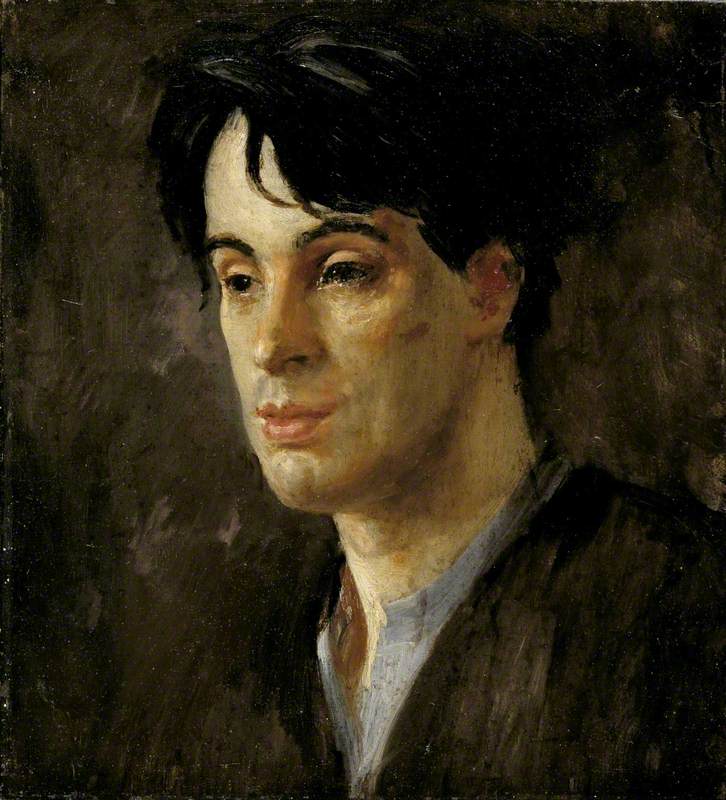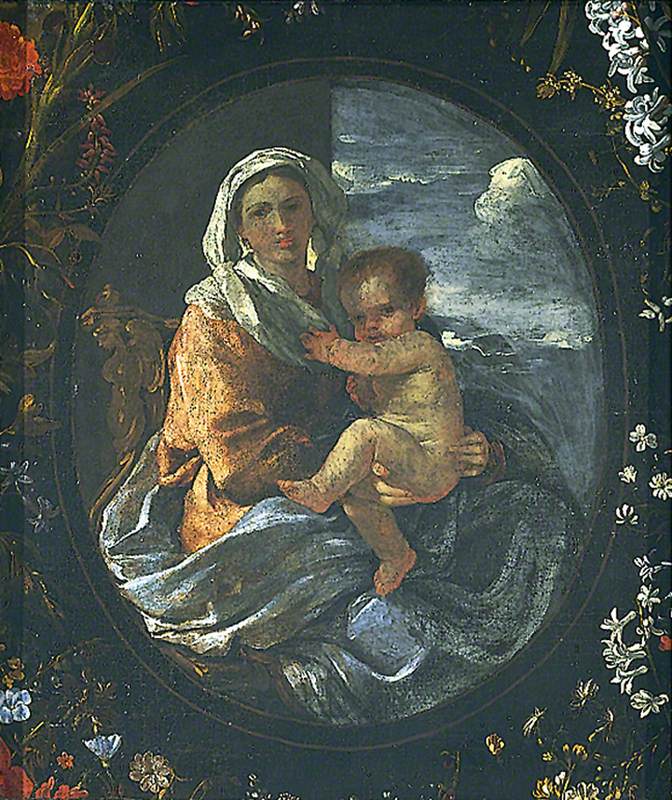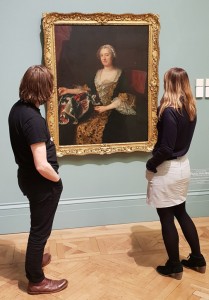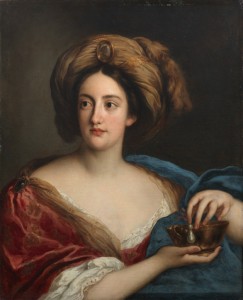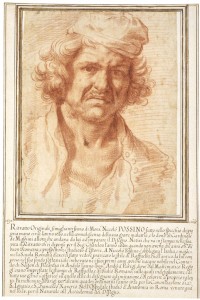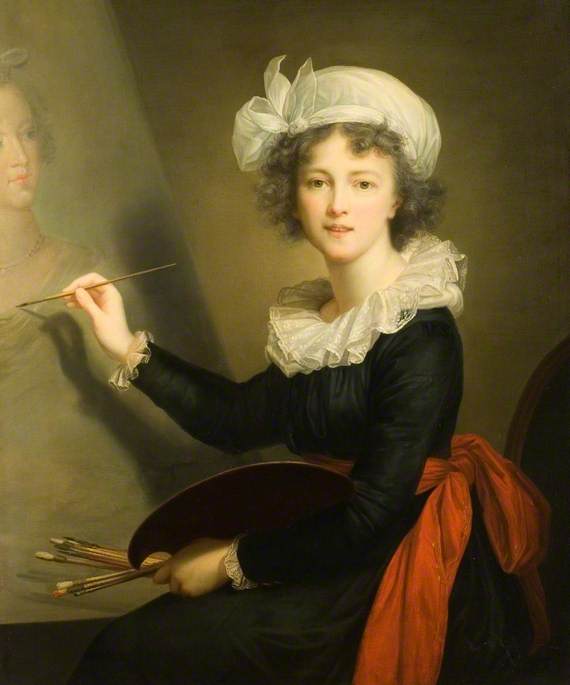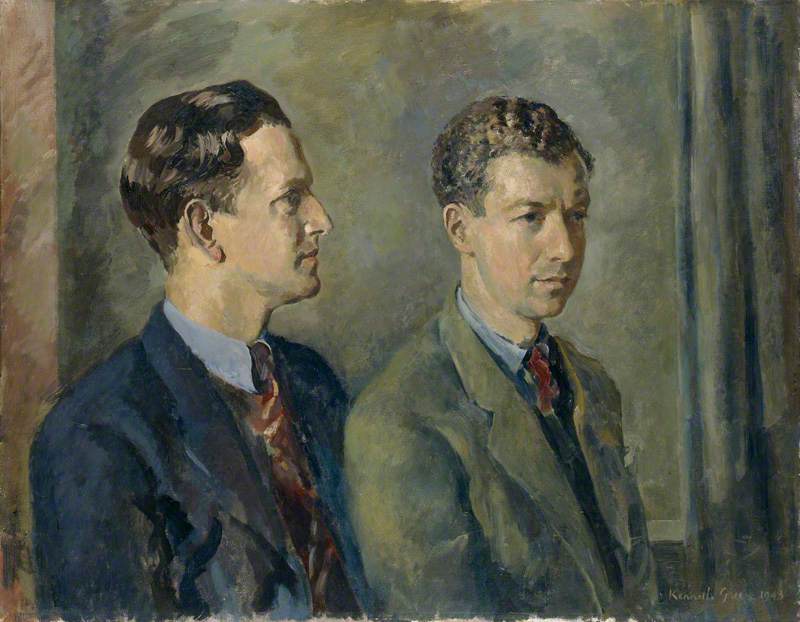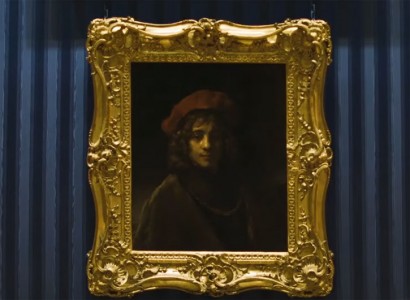I love art which plays games, pictures which reveal hidden meanings and wrestle with paradox. And few paintings do this better than A Dance to the Music of Time by the seventeenth-century French artist, Nicolas Poussin, which is now in The Wallace Collection. At first, the conceit seems so simple – yet each time you peel away a layer of meaning, another becomes apparent.
The first question is inspired by the title. If the old man with wings who plays the lyre represents Time, then who are the four figures reeling to his tune, and what do they represent?
When I first saw the painting, a few years ago, I was certain that the dancers must simply personify the four seasons. In a note of sunny optimism it is Summer, glowing in the morning light, who turns her head to catch our eye. Next, in the shadow, with his back to us, is Autumn wearing a garland of dead leaves. Winter, with a dark cloud overhead, is plain and unadorned, and Spring, with a headdress of bud-like pearls, is flushed and radiant in the sunlight.
But that would be too simple for Poussin, the painter of puns and multiple meanings. Now I realise that the dancers also personify a Wheel of Fortune, what in the seventeenth century would have been interpreted as a moralistic take on the 'four states of man'. Poverty is alleviated by Labour, which leads to Riches, and then Pleasure, which – if overindulged – will lead back to Poverty. So it isn’t just Summer who wears roses in her free-flowing hair, and has caught our eye so mischievously, but Pleasure.
Things are already complicated, but Poussin’s game goes on. The order of the seasons and the four states mean that dancers must be turning clockwise – Time would surely not allow it any other way – and their motion reflects the direction of the chariot which soars above them. The reins are held by Apollo, god of the sun, but also of music and the arts. Above his head, he holds the ring of the Zodiac, representing the cycle of the year. Before him flies Dawn, scattering flowers as she goes, and behind him trail eight of the Hours – the nymphs who in Classical mythology represented the passing of the day.
So everything we have seen so far seems carefully contrived to point to circularity and regeneration – the rhythm of the seasons, of day and night, of the phases of Zodiac. But there is a twist. The sculpture, known as a herm, on the left edge of the painting hints at another double meaning. He is Janus, the two-faced god who looks back on the old year and forward to the new. Here, however, he also marks the inevitable passing of time: the face to the left is a youthful one, but the other, looking to the right, to the future, has aged.
This is linear time; time which will have an end. And the more we reflect on the painting, the more this duality becomes apparent. Look to the right of the composition just behind Time’s back – surely this is a stone tomb, and putto sitting by it holds an hourglass. We can’t quite see how much sand remains, but we know for sure that it must be running out and that the tomb is waiting for us. And what of his fellow putto who so elegantly mirrors his pose on the opposite side of the picture, by the skirts of Pleasure? We also know that the bubbles he is blowing are – like pleasure and indeed life itself – ephemeral. Time renews, but he also destroys.
Nick Trend, Deputy Head, Telegraph Travel
